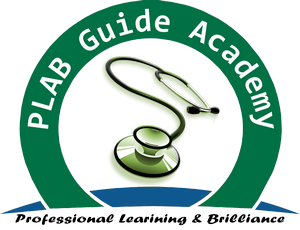Mock 11
Completion requirements
- Picture for Chickenpox station.
- Picture for
- Abdominal examination for intestinal obstruction should be done in the Simman room.
- Breast mannikin (for Lady with breast lump).
- Urine Dipstick for urinalysis.
2. Aortic Dissection
Patient Prompts
- Onset: "The pain started suddenly about an hour ago."
- Duration: "It's been constant since it started."
- Progression: "It seems to be getting worse."
- Aggravating Factors: "Nothing makes it better or worse; it's just there all the time."
- Relieving Factors: "I haven’t found anything that relieves the pain."
- Past Medical History: Hypertension.
- Regular Medications: Occasionally takes antihypertensive medication.
- Allergies: No known drug allergies.
- Smoking and Alcohol Intake: Smokes a pack a day, occasional alcohol.
- Use of Recreational Drugs: Denies use.
- Occupational History: Works as a financial analyst.
- Simulated Examination Findings: Blood pressure 180/110 mmHg, pulse 98 bpm, asymmetrical blood pressure readings between arms, pain described as tearing/ripping in nature, radiating to the back.
Scenario Clinchers
- Patient Concerns: Extremely worried about the pain and its severity, anxious about the potential causes.
- Clinchers and Important Points for the Doctors: The description of the pain, high blood pressure, and the patient's medical history are highly indicative of an aortic dissection.
What You Must Do:
- Immediate Actions:
- Administer IV antihypertensives to reduce blood pressure and the mechanical stress on the aorta (e.g., beta-blockers like esmolol).
- Provide pain management with appropriate analgesics.
- Initiate continuous monitoring of vital signs and cardiac rhythm.
- Diagnostic Steps:
- Order a CT angiogram of the chest to confirm the diagnosis of aortic dissection.
- Consider an echocardiogram to assess cardiac function and any involvement of the aortic valve.
- Preparation for Intervention:
- Alert cardiothoracic surgery for potential surgical intervention.
- Prepare for possible transfer to a facility equipped for emergency cardiovascular surgery if not available on-site.
Differential Diagnosis
- Aortic dissection
- Myocardial infarction
- Pericarditis
- Pulmonary embolism
Typical Question to Rule Out Differentials: "Does the pain change with breathing or body position? Have you experienced any symptoms like shortness of breath, palpitations, or fainting?"
Red Flags
- Sudden onset of severe chest pain with a ripping or tearing sensation
- Difference in blood pressure between arms
- Signs of shock or cardiac tamponade (hypotension, muffled heart sounds, distended neck veins)
Actions Doctor Should Do
- Administer medications and manage pain as outlined above.
- Perform necessary diagnostics urgently.
- Prepare for immediate surgical consultation and potential intervention.
Referral Needs
- Type of Referral: Immediate referral to a cardiothoracic surgeon.
- Reason for Referral: Surgical evaluation and management are critical for survival in aortic dissection, necessitating urgent specialist involvement.
This revision ensures that all aspects of emergency management of a suspected aortic dissection are clear, providing a detailed plan for initial assessment, immediate management, diagnostics, and referral.
